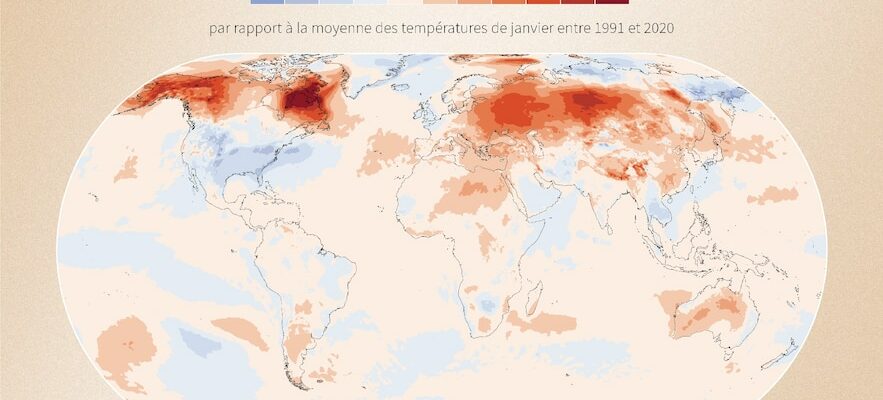The months follow each other and, unfortunately, are alike: January 2025 was the hottest month of January ever measured in the world, according to the European observatory Copernicus, showing off the hope that the phenomenon lasses almost two years of temperature records, above all under the effect of global warming.
“January 2025 is another surprising month, continuing the record temperatures observed in the past two years, despite the development of the Naña conditions in the Tropical Pacific and their temporary cooling effect on global temperatures,” said Samantha Burgess, director Deputy of the Climate Change (C3S) service of Copernicusin his monthly bulletin published Thursday, February 6.
With an average temperature of 13.23 ° C according to Copernicus, “January 2025 exceeded by 1.75 ° C the pre -industrial level”, before humans deeply modify the climate by the massive use of coal, oil and Fossil gas.
“Surprising”
The scientists expected the series of records of the years 2023 and 2024, the two warmest ever measured, interrupted with the end of the natural phenomenon warming El Niño and the arrival of its opposite, the Niña. “This is a little surprising … We do not see this cooling effect, or at least temporary brake, on the world temperature that we expected to see,” Julien Nicolas told AFP , a climatologist from Copernicus. Copernicus is even signs “of a slowdown or a cessation of evolution towards the Niña conditions”, which could disappear completely by March, according to the climatologist.
Temperature anomalies in January 2025
© / AFP.com/paz PIZARRO, Pauline Paillassa
Global temperatures, the increase of which has fueled droughts, heat waves or devastating floods, are strongly dependent on those of the seas. However, the temperatures on the surface of the oceans, essential regulators of the climate which cover more than 70 % of the globe, remain at levels never seen before April 2023. For the surface of the oceans, January 2025, however The absolute record of January 2024. In the Arctic, where winter is very abnormally hot, the ice floe has reached its lowest extent for a month of January, practically equal to 2018, according to Copernicus.
Invalid projections?
With this temperature record, January 2025 becomes “the eighteenth of the last nineteen months for which the average air temperature on the surface of the globe has exceeded the pre-industrial level by more than 1.5 ° C” again the European observatory. Is more than the symbolic bar of + 1.5 ° C, corresponding to the most ambitious limit of the 2015 Paris Agreement, which aims to contain warming well below 2 ° C and to continue efforts for the limit to 1.5 ° C.
However, this agreement refers to long -term trends: such an average warming must be observed over at least 20 years to consider the limit. By taking this criterion, the climate is currently heated by approximately 1.3 ° C. The IPCC estimates that the 1.5 ° C bar will probably be reached between 2030 and 2035. And this, whatever the evolution of greenhouse gas emissions of humanity, today close to the peak but Not yet in decline.
If most climatologists believe that these successive records do not invalidate projections, while being in the high range of their estimates, certain scientists at the margin formulate the hypothesis that the climate warms faster under the effect of greenhouse gas emissions of human origin.
“Do we manage to discern a stronger climate response? For the moment there are a few elements, but not yet I would say an observation, demonstration, a stronger response than that expected,” summarizes Valérie Masson-Delmotte, eminent climatologist. The studies are underway to decide, but anyway, “in a climate where we continue to add greenhouse gases, we must not be surprised that we beat hot records”, recalls This former senior IPCC official.
